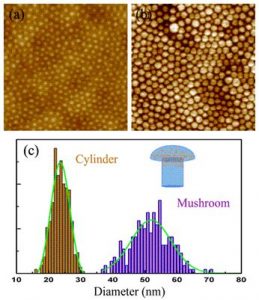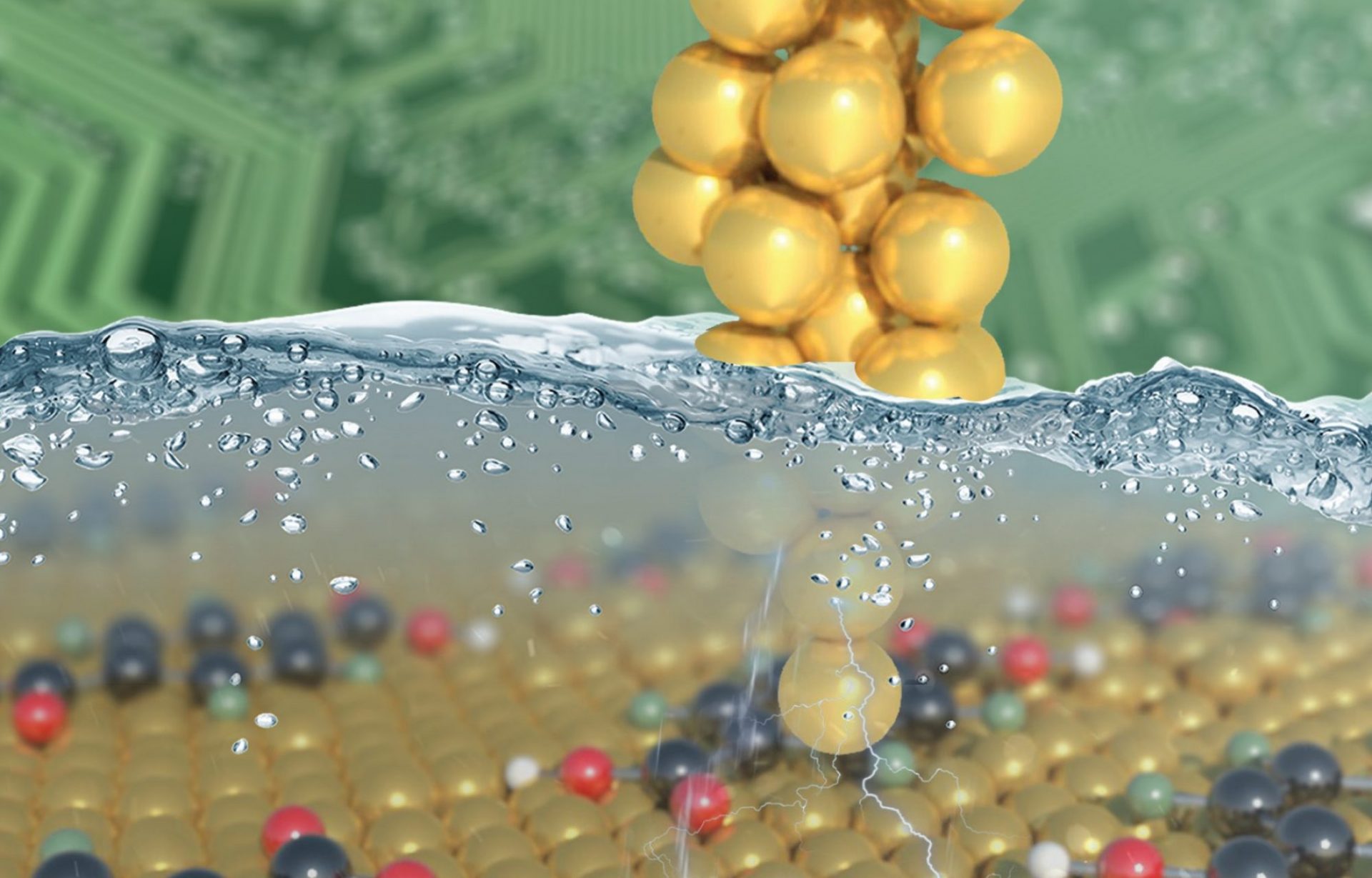Research Overview
The central objective for the water purification aspect of this program is to develop a set of strategies to produce low cost membranes that can eliminate both bacteria and toxic heavy metals from water and operate using only gravity or manual power.
Faculty Research
Wayland group develops membrane materials based on new strategies that utilize polymer transport properties rather than the conventional porosity approaches. Proof of concept experiments demonstrate the passage of water through lightly crosslinked hydrophilic homopolymer where the hydrophobic block provides rubber toughening. The cross-linked hydrophilic domains block bacteria (0.2 to 1μm) while allowing adequate water throughput. The hydrophilic domains contain carboxylic and sulfonic acid groups and other metal binding sites that sequester toxic heavy metals.
The figure below shows the microdomain structure of an amphiphilic block copolymer that self-assembles into hydrophilic cylindrical domains (light) oriented perpendicular to the surface. The domains are surrounded by a glassy, hydrophobic matrix (dark). A key result is that the swollen phase shown in b recovers the original dimensions upon drying. This reversibility is a consequence of the stable structure provided by the hydrophobic matrix.

AFM height images of poly(styrene-b-acrylic acid) copolymer film (a) before and (b) after exposure to water. (c) The domain diameter increase from 24 to 52 nm as noted in the histogram. The inset shows that the hydrophilic phase swells by forming a cap extending from a stem, resulting in a mushroom shaped domain
Technical Capabilities
Recent Publications
